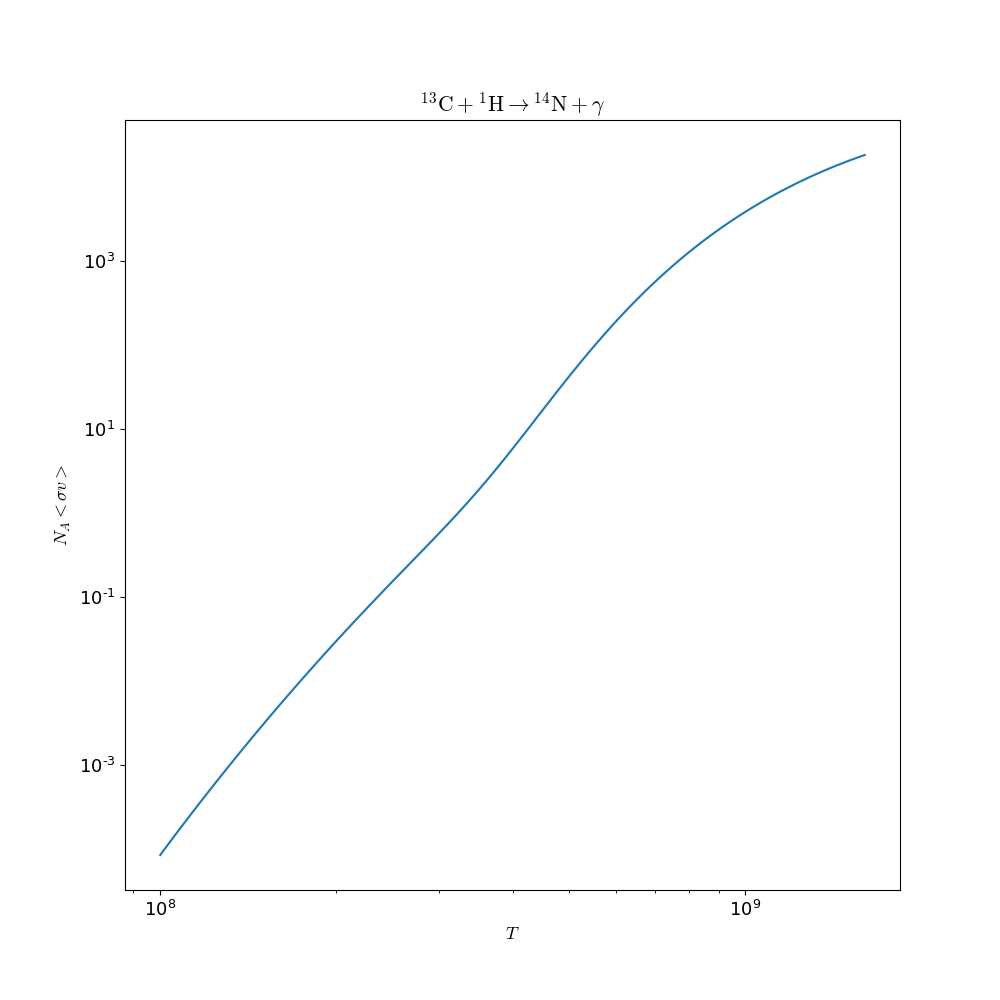pynucastro is a python library for interactively creating and exploring nuclear reaction networks. It provides interfaces to nuclear reaction rate databases, including the JINA Reaclib nuclear reactions database.
The main features are:
-
Ability to create a reaction network based on a collection of rates, a set of nuclei, or an arbitrary filter applied to a library.
-
Interactive exploration of rates and networks in Jupyter notebooks.
-
Many different ways of visualizing a network.
-
An NSE solver to find the equilibrium abundance of a set of nuclei given a thermodynamic state.
-
Ability to write out python or C++ code needed to integrate the network.
-
Support for tabular weak rates.
-
Rate approximations and the derivation of reverse rates via detailed balance.
-
Easy access to nuclear properties, including T-dependent partition functions, spins, masses, etc.
Documentation for pynucastro is available here:
https://pynucastro.github.io/pynucastro/
The following example reads in the ReacLib rate database and gets the rate for C13(p,g)N14 and evaluates it at a temperature of 1.e9 K and makes a plot of the T dependence:
In [1]: import pynucastro as pyna
In [2]: rl = pyna.ReacLibLibrary()
In [3]: c13pg = rl.get_rate_by_name("c13(p,g)n14")
In [4]: c13pg.eval(1.e9)
Out[4]: 3883.4778216250666
In [5]: fig = c13pg.plot()
In [6]: fig.savefig("c13pg.png")
An extensive demonstration of the capabilities of pynucastro is shown in this notebook:
We can also interactively explore a reaction network. Here's an example of hot-CNO with breakout reactions:
by increasing the temperature, you can see the transition from CNO to hot-CNO (proton captures on C13 become faster than the beta decay) and then the breakout of hot-CNO when the alpha capture on O14 becomes faster than its decay.
pynucastro is available on PyPI and can be installed via:
pip install pynucastro
Alternately, to install via source, you can do:
pip install .
for a systemwide install, or
pip install --user .
for a single-user install. This will put the pynucastro modules and library in the default location python searches for packages.
This package requires Python 3 (release 3.6 or later) and the following Python packages:
-
numpy -
sympy -
scipy -
matplotlib -
networkx -
ipywidgets -
numba
To build the documentation or run the unit tests, sphinx and
pytest are additionally required along with some supporting
packages. See the included requirements.txt file for a list of these
packages and versions. To install the packages from the requirements
file, do:
pip install -r requirements.txt
Is important to stress out that all the dependencies should be
installed before pynucastro, otherwise the installation should be
repeated.
We welcome contributions from anyone, including posting issues or submitting pull requests to the pynucastro github. For more details on how to contribute to pynucastro, please see CONTRIBUTING.md.
People who make a number of substantive contributions (new features, bug fixes, etc.) will be named "core developers" of pynucastro.
Core developers will be recognized in the following ways:
-
invited to the group's slack team
-
listed in the User's Guide and website as a core developer
-
listed in the author list on the Zenodo DOI for the project (as given in the .zenodo.json file)
-
invited to co-author general code papers / proceedings describing pynucastro. (Note: science papers that use pynucastro will always be left to the science paper lead author to determine authorship).
If a core developer is inactive for 3 years, we may reassess their status as a core developer.
We use our Github Discussions page for requesting help and interacting with the community.

